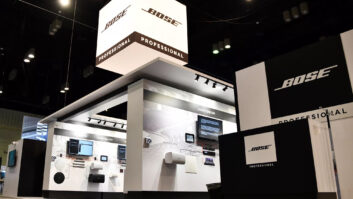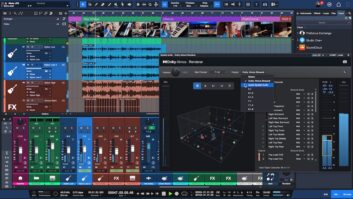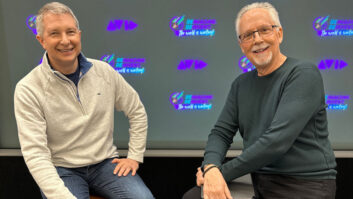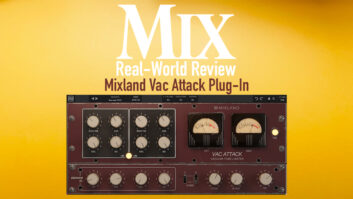
The internet is a pretty big deal; in fact, you’re probably using it right now. While it has given us interesting advancements like social media, however, there’s also been plenty of damage done, too, as we’ve abandoned—often too quickly—some major institutions. A lot of that has to do with misperceptions—usually the idea that something is behind the times and no longer relevant in our speedy Internet Age. When these institutions take the hit, some crumble to dust, but others are answering the challenge, finding newfound relevance as they undergo sometimes dramatic reinventions.
For instance, the public cast aside vinyl records in the 1980s because of the misperception that they sounded terrible compared to compact discs. For a while, it was a huge boon to the music industry as millions of people replaced their favorite LPs with CDs, but things took a massive turn for the worst when consumers jumped to MP3s and other digital formats just 10 years later, abandoning sound quality for convenience.
Now, even as CD sales dwindle, vinyl records have made a stunning comeback over the last five years, in large part because they sound better than digital audio files. According to Nielsen’s 2014 Mid-Year Music Industry Report, 3.7 million vinyl albums have been sold this year already—a 40.4 percent increase over the same time period in 2013, and nearly as many as were sold in all of 2011. While it’s a drop in the bucket for the music labels overall, it nonetheless reflects how the industry has reinvented the wheel (or turntable, if you will), fanning the flames to create a marketplace of consumers willing to actually go to a real brick-and-mortar store, and then drop $20-$30 to experience an album with better sound and deluxe packaging, instead of just ripping the audio off a YouTube video for free. That’s reinvention.
The arrival of the modern internet also slammed your local library pretty hard, too. I remember going to the main branch of the New York Public Library in 1995 to do some PSN research on one of the four public terminals they had, taking advantage of that “Yahoo search thing” someone told me about. At the time, it seemed like a pretty cool service for the library to offer.
But not anymore. The main function of libraries for centuries has been the storage and dispensing of information—something that Google (and yeah, Yahoo) can do in the palm of our hands, thanks to smartphones. As a result, libraries across the country have been hit with an increasingly indifferent public that doesn’t want to see its tax dollars pay for an institution it doesn’t use and which doesn’t appear relevant in the Internet Age. Pinched budgets are forcing libraries to do less collection development (i.e. they can’t buy as many books, DVDs or—hello, music industry—CDs), and they’re having to cut back on information professionals (i.e. librarians) who can help you find more trustworthy sources than Wikipedia.
Faced with the misperception that they’re increasingly irrelevant, some libraries are shriveling up and dying, but others are embracing the public’s new love of technology by adding all kinds of things, like MakerSpaces—essentially consumer-oriented tech labs. The Cleveland Public Library’s MakerSpace offers use of a wide variety of tools, like a laser engraving and cutting machine; 3D printers and scanners; a vinyl-cutting machine; a photography, videography and graphics design lab; and a recording studio, complete with guitars, keyboards and a variety of DAWs, ranging from GarageBand to Pro Tools.

Is a small recording space in a library a threat to local studios? Probably not, but it’s a potential boon to pro-audio manufacturers if some people try it out, get bit by the recording bug and start hankering to make their own home recording set-up instead of reserving time at the MakerSpace. While not every library has the budget or room that Cleveland’s main branch does, even my local library has a few MakerBot 3D printers and a 3D scanner in its fledgling MakerSpace. The point is, formerly quiet libraries are loudly overcoming misperceptions and attracting visitors by redefining themselves and what they have to offer. That’s reinvention.
You know what else has to overcome misperceptions, attract visitors and redefine themselves? Trade shows, which in recent years have stumbled due to a perfect storm of factors: the internet’s ability to deliver info in a jiffy; social media’s capacity to connect us with knowledgeable peers; and the economic crash of 2008, which forced exhibitors and attendees in all industries to cut back on expenses with difficult-to-measure ROI—like trade shows. Faced with all these outside forces, plus some views that conventions are old hat now, some shows have gone away and others have co-located with other industries’ events, but a growing number have turned around and started redefining themselves.

The annual Audio Engineering Society (AES) Convention began addressing these issues a few years ago by introducing its show-within-a-show, the Project Studio Expo (PSE), which offers three days of extensive, real-world educational presentations for engineers, producers and recording enthusiasts, all within the exhibits showcase area, with none of it requiring additional, expensive educational registrations. An instant hit, the PSE has been a part of the AES Convention ever since, and has become just one of a number of innovations the AES has added to reaffirm its convention’s relevancy to both exhibitors and attendees.

That’s not the only convocation making changes, however. The Summer NAMM show, held yearly in Nashville, has taken to holding what it calls Music Industry Day on its last day, opening its doors to musicians, songwriters, and sound and staging professionals. Exhibitors get to talk with end-users in the real world instead of online, allowing them to get feedback on products and turn those visiting consumers into brand ambassadors who will share with their peers the good experience they had when dealing with the company face-to-face. Given the power of social media today, that’s a golden opportunity. That, combined with other changes and efforts to reposition the convention, resulted in a double-digit increase in pro-audio exhibitors in both in numbers and percentage growth at the 2014 edition.
And that idea of bringing in the public—a moderate reinvention—gets taken even further in other industries’ trade shows. I recently went to Book Expo America (BEA) in New York City—essentially the Winter NAMM Show of the publishing world. Whereas Shure might show this year’s new mics at Winter NAMM, Simon & Schuster previews upcoming books, and just as Winter NAMM has Carlos Santana or Billy Idol autographing at manufacturers’ booths to draw you in, BEA had the same thing with David Baldacci and, um, Billy Idol.

BEA has faced all the same trade show quandaries in fighting misperceptions that it’s no longer relevant—a stance only bolstered by the emergence a few years ago of eBooks, making a convention about text printed on dead trees feel even more passé. While physically it’s a large show, taking up most of the Jacob Javits Center in New York, it attracted 12,397 people in 2013; for comparison, the AES Convention, which takes up less than half the floor space that BEA does, attracted 18,453 when it was held there in 2013.
BEA’s experiment to redefine itself this year was to take a page from the Summer NAMM playbook and create BookCon, a one-day event allowing the reading public to see panels, get favorite books autographed and interact with publishers. The experiment paid off—the show sold out all 10,000 tickets and BEA now has plans to expand the event next year. In one fell swoop, the convention created new value to exhibitors and gave its attendance a booster shot in the arm. That’s reinvention.
The internet’s influence on our lives will keep expanding—it’s inevitable—but vinyl records, libraries and trade shows are just a handful of examples proving that reinventing an industry’s mission and answering misperceptions head-on are key to perseverance and continued relevance in these fast-changing times.







